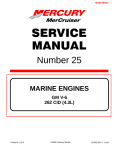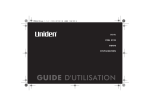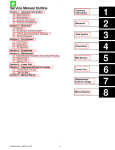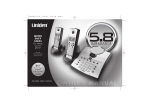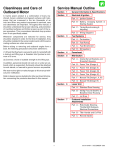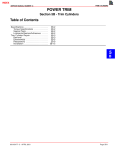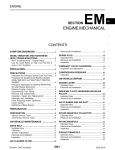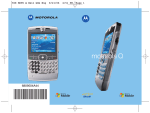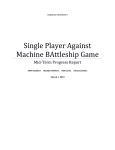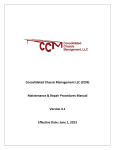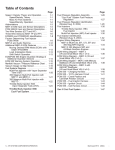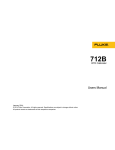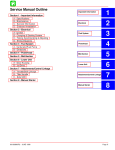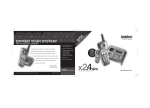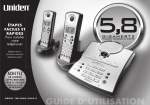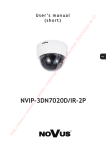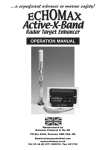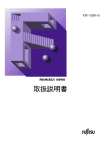Download ENGINE
Transcript
ENGINE 3 A 26790 181 CID (3.0L) 4 CYLINDER GM ENGINE Index Table of Contents Page Torque Specifications . . . . . . . . . . . . . . . . . . . . 3A - 1 Tools/Lubricants/Sealants . . . . . . . . . . . . . . . . 3A - 2 Engine Specifications . . . . . . . . . . . . . . . . . . . . 3A - 3 Cylinder Bore . . . . . . . . . . . . . . . . . . . . . . 3A - 3 Piston Clearance . . . . . . . . . . . . . . . . . . . 3A - 3 Piston Ring: Compression . . . . . . . . . . . 3A - 3 Piston Ring: Oil . . . . . . . . . . . . . . . . . . . . 3A - 3 Piston Pin . . . . . . . . . . . . . . . . . . . . . . . . . 3A - 3 Crankshaft . . . . . . . . . . . . . . . . . . . . . . . . 3A - 4 Camshaft . . . . . . . . . . . . . . . . . . . . . . . . . 3A - 4 Cylinder Head . . . . . . . . . . . . . . . . . . . . . 3A - 4 Valve System . . . . . . . . . . . . . . . . . . . . . . 3A - 5 General . . . . . . . . . . . . . . . . . . . . . . . . . . . . . . . . 3A - 6 Engine Identification . . . . . . . . . . . . . . . . . . 3A - 6 Engine Rotation . . . . . . . . . . . . . . . . . . . . . . 3A - 6 Firing Order . . . . . . . . . . . . . . . . . . . . . . . . . . 3A - 6 Priming Engine With Oil . . . . . . . . . . . . . . . . . . 3A - 7 Tool Required . . . . . . . . . . . . . . . . . . . . . . . . 3A - 7 Bearing Failures . . . . . . . . . . . . . . . . . . . . . . . . 3A - 8 Piston Failures . . . . . . . . . . . . . . . . . . . . . . . . . . 3A - 8 Pre-Ignition . . . . . . . . . . . . . . . . . . . . . . . . . . 3A - 8 Pre-Ignition Causes . . . . . . . . . . . . . . . . 3A - 8 Detonation . . . . . . . . . . . . . . . . . . . . . . . . . . . 3A - 9 Other Causes of Detonation . . . . . . . . . 3A - 9 Engine Mounts . . . . . . . . . . . . . . . . . . . . . . . . . 3A - 10 Rocker Arm Cover . . . . . . . . . . . . . . . . . . . . . . 3A - 10 Removal . . . . . . . . . . . . . . . . . . . . . . . . . . . 3A - 10 Installation . . . . . . . . . . . . . . . . . . . . . . . . . . 3A - 10 Rocker Arm/Push Rod . . . . . . . . . . . . . . . . . . 3A - 11 Removal . . . . . . . . . . . . . . . . . . . . . . . . . . . 3A - 11 Cleaning and Inspection . . . . . . . . . . . . . . 3A - 11 Installation . . . . . . . . . . . . . . . . . . . . . . . . . . 3A - 11 Valve Adjustment . . . . . . . . . . . . . . . . . . . . . . . 3A - 12 Engine Not Running . . . . . . . . . . . . . . . . . 3A - 12 Engine Running . . . . . . . . . . . . . . . . . . . . . 3A - 12 Hydraulic Valve Lifters . . . . . . . . . . . . . . . . . . 3A - 13 Locating Noisy Lifters . . . . . . . . . . . . . . . . 3A - 13 Removal . . . . . . . . . . . . . . . . . . . . . . . . . . . 3A - 13 Cleaning and Inspection . . . . . . . . . . . . . . 3A - 14 Installation . . . . . . . . . . . . . . . . . . . . . . . . . . 3A - 14 Valve Stem Oil Seal/Valve Spring . . . . . . . . . 3A - 15 Replacement Oil Seal Head Installed . . . . . . . . . . . . . . . . . . . . . . . 3A - 15 Cylinder Head . . . . . . . . . . . . . . . . . . . . . . . . . 3A - 16 Cleaning and Inspection . . . . . . . . . . . . . . 3A - 16 Installation . . . . . . . . . . . . . . . . . . . . . . . . . . 3A - 16 Cylinder Head and Valve Conditioning . . . . 3A - 17 Disassembly . . . . . . . . . . . . . . . . . . . . . . . . 3A - 17 Cleaning . . . . . . . . . . . . . . . . . . . . . . . . . . . Inspection . . . . . . . . . . . . . . . . . . . . . . . . . . Rocker Arm Studs . . . . . . . . . . . . . . . . . . . Valve Guide Bore Repair . . . . . . . . . . . . . Valve Springs - Checking Tension . . . . . . Valve Seats . . . . . . . . . . . . . . . . . . . . . . . . . Reassembly . . . . . . . . . . . . . . . . . . . . . . . . Dipstick Specifications . . . . . . . . . . . . . . . . . . All Engines . . . . . . . . . . . . . . . . . . . . . . . . . Oil Pan . . . . . . . . . . . . . . . . . . . . . . . . . . . . . . . Removal . . . . . . . . . . . . . . . . . . . . . . . . . . . Installation . . . . . . . . . . . . . . . . . . . . . . . . . . Oil Pump . . . . . . . . . . . . . . . . . . . . . . . . . . . . . . Removal . . . . . . . . . . . . . . . . . . . . . . . . . . . Disassembly . . . . . . . . . . . . . . . . . . . . . . . . Cleaning and Inspection . . . . . . . . . . . . . . Reassembly . . . . . . . . . . . . . . . . . . . . . . . . Installation . . . . . . . . . . . . . . . . . . . . . . . . . . Torsional Damper . . . . . . . . . . . . . . . . . . . . . . Removal . . . . . . . . . . . . . . . . . . . . . . . . . . . Installation . . . . . . . . . . . . . . . . . . . . . . . . . . Crankcase Front Cover/ Oil Seal . . . . . . . . . . . . . . . . . . . . . . . . . . . . . . . Oil Seal Replacement (Without Removing Front Cover) . . . . . . . Removal . . . . . . . . . . . . . . . . . . . . . . . . . Installation . . . . . . . . . . . . . . . . . . . . . . . Crankcase Front Cover . . . . . . . . . . . . . . . . . Removal . . . . . . . . . . . . . . . . . . . . . . . . . . . Cleaning and Inspection . . . . . . . . . . . . . . Installation . . . . . . . . . . . . . . . . . . . . . . . . . . Flywheel and Engine Coupler . . . . . . . . . . . . Removal . . . . . . . . . . . . . . . . . . . . . . . . . . . Inspection . . . . . . . . . . . . . . . . . . . . . . . . . . Installation . . . . . . . . . . . . . . . . . . . . . . . . . . Rear Main Oil Seal . . . . . . . . . . . . . . . . . . . . . Removal . . . . . . . . . . . . . . . . . . . . . . . . . . . Cleaning and Inspection . . . . . . . . . . . . . . Installation . . . . . . . . . . . . . . . . . . . . . . . . . . Cleaning and Inspection . . . . . . . . . . . . . . Installation . . . . . . . . . . . . . . . . . . . . . . . . . . Main Bearings . . . . . . . . . . . . . . . . . . . . . . . . . Inspection . . . . . . . . . . . . . . . . . . . . . . . . . . Checking Clearances . . . . . . . . . . . . . . . . Main Bearing Replacement . . . . . . . . . . . Connecting Rod Bearings . . . . . . . . . . . . . Inspection and Replacement . . . . . . . . . . Connecting Rod/Piston Assembly . . . . . . . . Page 3A - 17 3A - 18 3A - 19 3A - 19 3A - 19 3A - 20 3A - 20 3A - 22 3A - 22 3A - 22 3A - 22 3A - 22 3A - 23 3A - 23 3A - 23 3A - 23 3A - 23 3A - 24 3A - 24 3A - 24 3A - 24 3A - 25 3A - 25 3A - 25 3A - 25 3A - 26 3A - 26 3A - 26 3A - 26 3A - 26 3A - 26 3A - 27 3A - 27 3A - 28 3A - 28 3A - 28 3A - 28 3A - 28 3A - 28 3A - 29 3A - 29 3A - 29 3A - 30 3A - 30 3A - 31 3A - 32 Index 3A - ENGINES 90-816462 2-695 90-816462 ENGINES - 3A 2-695 - –1 Removal . . . . . . . . . . . . . . . . . . . . . . . . . . . Disassembly . . . . . . . . . . . . . . . . . . . . . . . . Cleaning and Inspection . . . . . . . . . . . . . . Connecting Rods . . . . . . . . . . . . . . . . . Pistons . . . . . . . . . . . . . . . . . . . . . . . . . . Piston Pins . . . . . . . . . . . . . . . . . . . . . . . Reassembly . . . . . . . . . . . . . . . . . . . . . . . . Pistons and Piston Pins . . . . . . . . . . . . Piston Rings . . . . . . . . . . . . . . . . . . . . . . Installation . . . . . . . . . . . . . . . . . . . . . . . . . . Crankshaft . . . . . . . . . . . . . . . . . . . . . . . . . . . . Removal . . . . . . . . . . . . . . . . . . . . . . . . . . . Cleaning and Inspection . . . . . . . . . . . . . . Installation . . . . . . . . . . . . . . . . . . . . . . . . . . Crankshaft Sprocket . . . . . . . . . . . . . . . . . . . . Removal . . . . . . . . . . . . . . . . . . . . . . . . . . . Installation . . . . . . . . . . . . . . . . . . . . . . . . . . Page 3A - 32 3A - 33 3A - 33 3A - 33 3A - 33 3A - 34 3A - 34 3A - 34 3A - 35 3A - 36 3A - 37 3A - 37 3A - 37 3A - 37 3A - 38 3A - 38 3A - 38 Camshaft . . . . . . . . . . . . . . . . . . . . . . . . . . . . . Measuring Lobe Lift . . . . . . . . . . . . . . . . . . Removal . . . . . . . . . . . . . . . . . . . . . . . . . . . Inspection . . . . . . . . . . . . . . . . . . . . . . . . . . Camshaft Gear Replacement . . . . . . . . . Installation . . . . . . . . . . . . . . . . . . . . . . . . . . Camshaft Bearings . . . . . . . . . . . . . . . . . . . . . Removal . . . . . . . . . . . . . . . . . . . . . . . . . . . Inspection . . . . . . . . . . . . . . . . . . . . . . . . . . Installation . . . . . . . . . . . . . . . . . . . . . . . . . . Cylinder Block . . . . . . . . . . . . . . . . . . . . . . . . . Cleaning and Inspection . . . . . . . . . . . . . . Cylinder Conditioning . . . . . . . . . . . . . . Cylinder Boring . . . . . . . . . . . . . . . . . . . Cylinder Honing . . . . . . . . . . . . . . . . . . . Piston Selection . . . . . . . . . . . . . . . . . . Oil Filter By-Pass Valve . . . . . . . . . . . . . . . . . Inspection and/or Replacement . . . . . . . . Page 3A - 38 3A - 38 3A - 39 3A - 39 3A - 40 3A - 41 3A - 42 3A - 42 3A - 42 3A - 42 3A - 44 3A - 44 3A - 45 3A - 45 3A - 45 3A - 46 3A - 46 3A - 46 Index 3A - ENGINES 3A - 0 - ENGINES 90-816462 2-695 Torque Specifications Fastener Location Camshaft Sprocket Bolts Lb. In. Lb. Ft. 80 Connecting Rod Cap Nuts N·m 9 45 61 90 Note 1 122 Distributor Clamp 20 27 Engine Coupler to Flywheel 35 47 Flywheel Housing to Block 21 28 Flywheel to Crankshaft Bolts 65 88 Cylinder Head Bolts Front Cover Bolts 30 3.4 Front Mount to Block 21 28 Main Bearing Cap Bolts 65 88 23 Note 2 31 Manifold to Head Oil Pan Bolts-Crankcase 80 9 Oil Pan Bolts -to Front Cover 45 5 Oil Pan Studs to Oil Seal Retainer or Crankcase 15 1.7 Oil Pump Cover 72 8 Oil Pump to Block 120 14 Oil Pump Pickup 60 7 Rocker Arm Cover and Bolts 40 4.5 Rear Crankshaft Oil Seal Retainer Nuts 135 15 Spark Plugs 22 30 Starter Motor to Block 37 50 Timing Gear Cover 72 8 Torsional Damper Bolt 50 68 Water Pump to Block 15 20 Note 1: Retorque after first 20 hours of operation. Note 2: Retorque after first start up. Index 90-816462 2-695 ENGINES - 3A - 1 Tools/Lubricants/Sealants MERCURY MARINE SPECIAL TOOLS 91-24697 Piston Ring Expander 91-63209 Torch Lamp KENT MOORE SPECIAL TOOLS J5892 Valve Spring Compressor (Head on) J8062 Valve Spring Compressor (Head off) J23738-A Valve Stem Seal Tester J8101 Valve Guide Cleaner J8814 Valve Guide Reamer (Standard) J5830-02 Valve Guide Reamer (.015 in. oversize) J5802-01 Rocker Arm Stud Remover J6880 Rocker Arm Stud Installer J5715 Stud Bore Reamer (.003 in. oversize) J6036 Stud Bore Reamer (.013 in. oversize) J8089 Carbon Remover Brush J5910-04 Piston Support Tool J24086-B Piston Pin Tool J3936-03 Piston Ring Groove Cleaner J8037 Piston Ring Compressor J5239 Connecting Rod Guide Tool (3/8 -24) J8087 Cylinder Bore Checker J8369 Oil Pump Suction Pipe Installer J23042-B Timing Cover Seal Aligner J8520 Cam Lobe Lift Indicator J6098-01 Camshaft Bearing Installer/Remover Tool J9534-01 Distributor Shaft Lower Bearing Installer/Remover J6978-E Pulley Hub Puller J5590 Pulley Hub Installer J24420-B Universal Torsional Damper Remover LUBRICANTS/SEALANTS 92-34227--1 Quicksilver Perfect Seal 92-825407A12 Quicksilver 2-C-4 Marine Lubricant with Teflon 92–91601-1 Quicksilver RTV Sealer Index 3A - 2 - ENGINES 90-816462 2-695 Engine Specifications UNIT OF MEASUREMENT in. (mm) Model 3.0L/3.0LX Displacement 181 CID (3.0L) CYLINDER BORE Diameter Out of Round Production T Taper 3.9995-4.0025(101.588-101.790) Production .0005(0.012) Max Service .002(0.05) Max Thrust Side .0005(0.012) Max Relief Side .0005(0.012) Max Service .001(0.02) Max PISTON CLEARANCE Production .0025-.0035(0.064-0.088) Max Service .0035(0.08) Max PISTON RING: COMPRESSION G Groove Clearance Cl Production Top 2nd .0012-.0029(0.030-0.073) 0012- 0029(0 030-0 073) Service Production G Gap .003(0.09) Max Top 2nd .010-.020(0.254-0.762) 010- 020(0 254-0 762) Service .035(0.88) Max PISTON RING: OIL Groove C Clearance Gap Production .001-.006(0.026-0.152) Service Limit .007(0.17) Max Production .010-.030(0.254-0.762) Max Service Limit .040(1.01) Max PISTON PIN Diameter Clearance .9270-.9271(23.546-23.550) Production .0003–.0006(0.008-0.016) Service Limit .001(0.02) Max Fit in Rod .0008-.0019(0.020-0.050) Interference Index 90-816462 2-695 ENGINES - 3A - 3 CRANKSHAFT Diameter Production .0002(0.005) Max Service .001(0.02) Max Production .0002(0.005) Max Service .001(0.02) Max Production No.1-No.4 .001-.0024(0.025-0.060) Service No.5 .0016-.0035(0.041-0.088) Production No.1-No.4 .001-.0025(0.03-0.06) Service No.5 .002-.0035(0.05-0.08) Taper M i JJournall Main Out of Round Main M i Bearing B i g Cl Clearance 2.2979-2.294(58.367-58.404) Crankshaft End Play .002-.006(0.05-0.15) Diameter Taper C k i Crankpin Out of Round 2.09980-20995(53.289-53.327) Production .0003(0.007) Max Service .001(0.02) Max Production .0002(0.51) Max Service .001(0.02) Max Production Rod Bearing g C Clearance .0017-.0027(0.044-0.0686) Service Rod Size Clearance .006-.017(0.153-0.4318) Max CAMSHAFT Lobe Lift (Max (Max.)) Intake .2529(6.425) Exhaust .2529(6.425) Journal Diameter 1.8677-18697(47.440-47.490) Camshaft End Play .003-.008(0.08-0.2032) Max CYLINDER HEAD Gasket Surface Flatness .003-.008in any 6 in.(152) or .007(0.15) Overall Max Index 3A - 4 - ENGINES 90-816462 2-695 VALVE SYSTEM Lifter Hydraulic Rocker Arm Ratio 1.75 to 1 Collapsed Tappet Gap 3/4 Turn Down from Zero Lash Face Angle Intake 45° Exhaust 45° Seat Angle (Intake & Exhaust) 46° Seat Runout (Intake & Exhaust) .002(0.05) Max Seat Width Production Stem S Cl Clearance Service Intake 1/16 (.0625in). (1.16 mm) Exhaust 1/16-5/64 [.0625-.07812 in.] (1.6-2.0 mm) Intake .0010-.0027(0.025-0.069) Exhaust .0007-.0027(0.018-0.069) Intake .003(0.09) Max Exhaust .004(0.11) Max Free Length Pressure Sp i g Spring Installed Height ± .031(8) Internal Damper 2-1/16 in. (52 mm) Valve Closed 100-110 lb. (136-149 N) at 1-19/32 in. (41 mm) Valve Open 208-220 lb. (282-300 N) at 1-7/32 in. (31 mm) Intake (1/32)1 6562(42) (1/32)1.6562(42) Exhaust None Index 90-816462 2-695 ENGINES - 3A - 5 General Engine Rotation Some of the repairs in this section must be completed with engine removed from boat. Engine removal depends upon type of repair and boat design. Place engine on repair stand for major repairs. Engine rotation terminology at times has caused confusion. To clarify, engine rotation is determined by observing flywheel rotation from the rear (transmission or stern drive end) of the engine looking forward (water pump end). When engine removal is not required, make certain that battery cables are disconnected at the battery prior to performing any on-board engine repair procedure. PROPELLER ROTATION IS NOT NECESSARILY THE SAME as engine rotation. Do not rely on propeller rotation in determining engine rotation. Lubricate all moving parts (during reassembly) with engine oil. Apply Quicksilver Perfect Seal on threads of and under heads of cylinder head bolts, and on threads of all cylinder block external bolts, screws and studs. Model No. of Cylinders Cu. In./Litres Displacement MCM 3.0L/3.0LX 4 181 (3L) a Engine Identification The MerCruiser Model can be determined by looking at the LAST TWO LETTERS of the engine code stamped into the cylinder block. This code number is stamped on all MerCruiser power packages and replacement partial engines, but not replacement cylinder block assemblies. If the engine serial number and/or model decals are missing, the engine code letters may help in determining the engine models. 72001 a - Left-Hand Rotation (CCW) - All Stern Drive Engines Firing Order a 74520 3.0L uses the 2.5L cylinder head 3.0LX uses the 3.0L cylinder head a - 4 Cylinder-In-Line Engine Code (Next To Distributor) G.M. Engine Code Location MCM Stern Drive Engines (LH Rotation) 3.0L - RM, RJ 3.0LX - RN, RK Index 3A - 6 - ENGINES 90-816462 2-695 Priming Engine With Oil 1. Fill crankcase to proper level with the recommended engine oil. IMPORTANT: This applies to all power packages that have not been run within 6 months, replacement of partial engines or after rebuilding an engine. 2. Remove spark plugs. Tool Required 91-52024A1 Remote Starter Kit 3. Leave ignition key in ”OFF” position. 4. Connect remote starter switch (91-52024A1) to large 12 V terminal (RED battery cable) and small terminal (RED/YELLOW) wire on starter motor. a. If remote starter switch is not available, disconnect PURPLE wire from ignition coil before using key switch to crank the engine over. Tape terminal on PURPLE wire to prevent it from touching ground. 5. Crank engine for 15 seconds, then allow starter motor to cool down for 1 minute. This should prevent starter motor from overheating. 6. Repeat this process until a total of 45 seconds of cranking time is achieved. 7. Remove remote starter switch. a. If key switch was used, reconnect PURPLE wire to ignition coil. 71089 8. Install spark plugs and wires 9. Supply cooling water to seawater pump and start motor. Index 90-816462 2-695 ENGINES - 3A - 7 Bearing Failures Overlay Wiped Out Scratches Dirt Imbedded Scratched into Bearing Material Bright (Polished) Sections Lack of Oil Improper Seating Radius Ride Craters or Pockets by Dirt Overlay Gone from Entire Surface 70436 Tapered Journal Radius Ride Fatigue Failure Piston Failures PRE-IGNITION CAUSES Pre-Ignition 1. Hot spots in the combustion chamber from glowing deposits (due in turn to the use of improper oils and/or fuels). Pre-ignition is abnormal fuel ignition, caused by combustion chamber hot spots. Control of the start of ignition is lost, as combustion pressure rises too early, causing power loss and rough running. The upward motion on the piston is opposed by the pressure rise. This can result in extensive damage to the internal parts from the high increase in combustion chamber temperature. 2. Overheated spark plug electrodes (improper heat range or defective plug). 3. Any other protuberance in the combustion chamber, such as an overhanging piece of gasket, an improperly seated valve or any other inadequately cooled section of material which can serve as a source. Engine failures, which result from the foregoing conditions, are beyond the control of Mercury Marine; therefore, no warranty will apply to failures which occur under these conditions. 72424 Pre-Ignition Damage Index 3A - 8 - ENGINES 90-816462 2-695 Detonation Detonation, commonly called “fuel knock,” “spark knock” or “carbon knock,” is abnormal combustion of the fuel which causes the fuel to explode violently. The explosion, in turn, causes overheating or damage to the spark plugs, pistons, valves and, in severe cases, results in pre-ignition. Use of low octane gasoline is one of the most common causes of detonation. Even with high octane gasoline, detonation could occur if engine maintenance is neglected. 4. Excess accumulation of deposits on piston and/or combustion chamber (results in higher compression ratio). 5. Inadequate cooling of engine by deterioration of cooling system. Engine failures, which result from the foregoing conditions, are beyond the control of MerCruiser; therefore, no warranty will apply to failures which occur under these conditions. OTHER CAUSES OF DETONATION IMPORTANT: Use of improper fuels will cause engine damage and poor performance. 72425 1. Over-advanced ignition timing. 2. Lean fuel mixture at or near full throttle (could be caused by carburetor or leaking intake manifold). Detonation Damage 3. Cross-firing spark plugs. 72315 Index 90-816462 2-695 ENGINES - 3A - 9 Engine Mounts Rocker Arm Cover Removal It may be necessary to remove exhaust manifold before removing rocker arm cover. Refer to Section 7B for removal. 1. Disconnect crankcase ventilation hoses. 2. Remove any items that interfere with the removal of rocker arm covers. 74275 Front Mount IMPORTANT: DO NOT pry rocker arm cover loose. Gaskets, which may adhere to cylinder head and rocker arm cover, may be loosened by bumping end of rocker cover from the rear with palm of hand or a rubber mallet. 3. Remove rocker arm cover. Installation 1. Clean sealing surfaces on cylinder head and rocker arm cover with degreaser. 2. Place new rocker arm cover gasket in position in rocker arm cover. 3. Install rocker arm cover. Torque screws to 40 lb. in. (4.5 N·m). 4. Install exhaust manifolds, if removed. Press Mount Out with Press 72318 Rear Mount/Flywheel Housing 5. Install any items which were removed to allow removal of rocker arm covers. 6. Connect crankcase ventilation hoses to rocker arm covers. Index 3A - 10 - ENGINES 90-816462 2-695 IMPORTANT: Place rocker arm assemblies and push rods in a rack for reassembly in their original locations. Rocker Arm/Push Rod a Cleaning and Inspection b 1. Clean parts with solvent and dry with compressed air. c 2. Inspect all contact surfaces for wear. Replace all damaged parts. e Installation d IMPORTANT: When installing rocker arms and rocker arm balls, coat bearing surfaces of rocker arms and rocker arm balls with engine oil. 74287 Valve Mechanism a b c d e - Nut Ball Unit Rocker Arm Push Rod Rocker Arm Stud Removal 1. Install push rods in their original locations. Be sure push rods seat in lifter socket. 2. Install rocker arms, rocker arm balls and rocker arm nuts in their original locations. 3. Torque rocker arm nuts to 20 lb. ft. (27 N·m). No valve adjustment is required. Valve lash is automatically set when rocker arm nuts are torqued to specification. 4. Adjust carburetor idle speed and mixture. NOTE: When servicing only one cylinder’s rocker arms, bring that cylinder’s piston up to TDC before removing rocker arms. When servicing all rocker arms, bring No. 1 piston up to TDC before removing rocker arms. 1. Remove rocker arm covers as outlined. 2. Remove rocker arm assemblies and push rods. Index 90-816462 2-695 ENGINES - 3A - 11 5. Crank engine one revolution until pointer “0” mark and torsional damper mark are again in alignment. This is No. 4 firing position. With engine in this position, the following valves may be adjusted: Valve Adjustment Engine Not Running With valve cover removed, adjust valves when lifter is on low part of camshaft lobe, as follows: 1. Crank engine with starter or turn over in normal direction of rotation until mark on torsional damper lines up with center “0” mark on timing tab, and engine is in No. 1 firing position. This may be determined by placing fingers on No. 1 valve as mark. If valves move as mark comes up to timing tab, engine is in No.4 firing position and should be turned over one more time to reach No. 1 position. No. 2 Cylinder - Exhaust No. 3 Cylinder - Intake No. 4 Cylinder - Exhaust 6. Install distributor cap, spark plug wires and coil lead. 7. Install rocker arm cover; torque to 40 lb. in. (4.5 N·m). 72300 50770 No. 1 Cylinder - Exhaust and Intake No. 2 Cylinder - Intake No. 3 Cylinder - Exhaust No. 4 Cylinder - Intake Engine Running 2. With engine in No. 1 firing position as determined above, the following valves may be adjusted: 1. Run engine until it reaches normal operating temperature, then remove valve cover. 3. Back out adjusting nut until lash is felt at push rod, then turn in adjusting nut until all lash is removed. This can be determined by moving push rod upand-down while turning adjusting nut until all play is removed. 2. With engine running at idle, back off valve rocker arm nut until valve rocker arm starts to clatter. 4. Hydraulic lifters now can be adjusted by tightening adjustment nut an additional 3/4-turn. Valve lash should be checked after engine has run and reached operating temperature. 4. Turn nut down 1/4 additional turn and pause 10 seconds until engine runs smoothly. Repeat additional 1/4 turns, pausing 10 seconds each time, until nut has been turned down 3/4 turn from zero lash position. Following procedure should be completed only if readjustment is required. 3. Turn rocker arm nut down slowly until clatter just stops. This is zero lash position. IMPORTANT: The following preload adjustment must be done slowly to allow lifter to adjust itself, thus preventing possibility of the valve head contacting the top of piston, which may result in internal damage and/or bent push rods. Index 3A - 12 - ENGINES 90-816462 2-695 5. Repeat Steps 2-3-4 to adjust other valves. 6. Install valve covers, torque screws to 40 lb. in. (4.5 N·m). 7. Adjust carburetor idle mixture and idle speed. Check for leaks. Hydraulic Valve Lifters Hydraulic valve lifters require little attention. Lifters are extremely simple in design. Normally, readjustments are not necessary and servicing requires only that care and cleanliness be exercised in the handling of parts. Locating Noisy Lifters Locate a noisy valve lifter by using a piece of garden hose approximately 4 ft. (1.2 m) in length. Place one end of hose near end of each intake and exhaust valve, with other end of hose to the ear. In this manner, sound is localized, making it easy to determine which lifter is at fault. Another method is to place a finger on face of valve spring retainer. If lifter is not functioning properly, a distinct shock will be felt when valve returns to its seat. General types of valve lifter noise are as follows: 1. Hard rapping noise - usually caused by plunger becoming tight in bore of lifter body so that return spring cannot push plunger back up to working position. Probable causes are: a. Excessive varnish or carbon deposit, causing abnormal stickiness. 3. General noise throughout valve train - this will, in most cases, be a definite indication of insufficient oil supply or improper adjustment. 4. Intermittent clicking - probable causes are: a. A microscopic piece of dirt momentarily caught between ball seat and check valve ball. b. In rare cases, ball itself may be out of round or have a flat spot. c. Improper adjustment. In most cases, where noise exists in one or more lifters, all lifter units should be removed, disassembled, cleaned in solvent, reassembled and reinstalled in engine. If dirt, corrosion, carbon, etc., is shown to exist in one unit, it more likely exists in all the units; thus it would only be a matter of time before all lifters caused trouble. Removal 1. Remove as previously outlined: a. Rocker arm covers. b. Intake manifold. IMPORTANT: Keep valve push rod and hydraulic lifter from each valve together as a matched set and mark or store them so they can be reinstalled in the same location later. c. Rocker arm assemblies and push rods. 2. Remove fasteners from lifter retainers (restrictors) and remove retainers. Do not disturb lifters at this time. b. Galling or “pickup” between plunger and bore of lifter body, usually caused by an abrasive piece of dirt or metal wedged between plunger and lifter body. 2. Moderate rapping noise - probable causes are: a. Excessively high leakdown rate. b. Leaky check valve seat. c. Improper adjustment. Index 90-816462 2-695 ENGINES - 3A - 13 3. Make matching marks on all retainers and lifters as to location and orientation in bores, to allow reassembly in exact position on camshaft lobes (so that the roller’s bearing and roller will roll in the same direction on the same lobe, if reused). Remove valve lifters. Cleaning and Inspection 1. Thoroughly clean all parts in cleaning solvent and inspect them carefully. 2. If any parts are damaged or worn, entire lifter assembly should be replaced. 3. If outer lifter body wall is scuffed or worn, inspect cylinder block lifter bore. 4. If push rod seat is scuffed or worn, inspect push rod. Installation IMPORTANT: It is recommended that the engine oil be changed and a new oil filter be installed whenever servicing valve lifters or camshaft. 05030 LIFTER “A” LIFTER “B” IMPORTANT: Before installing lifters, coat the lifter with engine oil. If new lifters or a new camshaft have been installed, an additive containing EP lube (such as General Motors Cam and Lifter Prelube or equivalent) should be poured over camshaft lobes before installing lifters. a b c d e IMPORTANT: DO NOT install used valve lifters if a new camshaft has been installed. f g 1. Install valve lifters into bores. h 2. Install push rod covers, using new gaskets and torque to specification. i 05030 LIFTER “A” a b c d - e f g h i - Push Rod Seat Retainer Lifter Body Push Rod Seat Metering Valve (Lifter “A”) Inertia Valve (Lifter “B”) Plunger Check Ball Check Ball Spring Check Ball Retainer Plunger Spring LIFTER “B” 3. Install distributor, positioning rotor to number 1 cylinder position, then connect primary lead at coil. 4. Install distributor cap and spark plug wires. 5. Adjust valves to specifications. 6. Adjust ignition timing, carburetor idle speed and mixture. Index 3A - 14 - ENGINES 90-816462 2-695 Replacement Oil Seal Head Installed Valve Stem Oil Seal/Valve Spring 1. Remove rocker arm cover. a 2. Remove spark plug, rocker arm and push rod on cylinder to be serviced. b 3. Place piston for that cylinder at TDC to prevent valves from dropping into the cylinder. c 4. Compress valve spring with tool (J-5892) and remove valve keys, valve spring cap, spring shield and valve spring. d e b f a g 72881 a - Valve Spring Compressor (J-5892) b - Rocker Arm Nut 5. Remove valve stem oil seal. 50841 a - Keys (2 per Valve) b - Cap c - Seal (On LX Models, These Are Used Only On Intake Valve Stems Do Not Install Them On Exhaust Valve Stems) d - Valve Spring Shield e - Valve Spring f - Damper, Internal g - Valve a 72330 a - Valve Guide Seal 6. To install, set valve spring, (close, coiled end of spring is installed against cylinder head) valve shield and valve cap in place. Compress spring with tool (J-5892) and install oil seal in lower groove of stem, making sure that seal is flat and not twisted. Index 90-816462 2-695 ENGINES - 3A - 15 NOTE: A light coat of oil on seal will help prevent twisting when compressor tool is released. IMPORTANT: Do not turn crankshaft while valve springs, retainers, and locks are removed or valves will fall into cylinder. 7. Install valve keys and release compressor tool. Be sure that keys seat properly in upper groove of valve stem. ! CAUTION The head gasket may be holding cylinder head to block. Use care when prying off cylinder heads. DO NOT damage gasket surfaces. DO NOT drop cylinder heads. 3. Place cylinder head on wooden blocks to prevent damage to gasket surfaces. 8. Install push rods and rocker arm assemblies. Cleaning and Inspection 9. Torque rocker arm nuts to 20 lb. ft. (27 N·m). 1. Clean gasket material and sealer from engine block and cylinder heads. 10. Install rocker arm cover and torque to 40 lb. in. (4.5 N·m). Install spark plug, and torque to 15 lb. ft. (20 N·m). 2. Inspect sealing surfaces for deep nicks and scratches. 11. Install spark plug and torque to specifications. 3. Inspect for corrosion around cooling passages. 12. Repeat steps 2 thru 8 for other cylinders. 4. Clean head bolt threads and engine block bolt hole threads, making sure no dirt, old oil or coolant remain. Cylinder Head 6 1 0 2 3 7 Installation ! CAUTION Cylinder Head Torque Sequence When using ribbed stainless steel head gaskets, apply a thin coating of Quicksilver Perfect Seal to both sides of gasket. Too much sealer may hold gasket away from head or block causing leakage. DO NOT use sealer on graphite composition head gaskets. 1. Drain engine cooling system. 1. Place head gasket in position over dowel pins. 2. Remove as outlined: 2. Carefully set cylinder head in place over dowel pins. 5 9 1 4 8 a. Exhaust manifolds. b. Intake manifold. c. Rocker arm covers. d. Rocker arm assemblies and push rods (keep in order for reassembly in their original locations). e. Any components attached to front or rear of cylinder head. f. 3. Coat threads of head bolts with Quicksilver Perfect Seal and install finger-tight. 4. To insure gasket sealing, torque head bolts in torque sequence to 90 lb. ft. (122 N·m). 5. Install push rods, rocker arm assemblies and lifter restrictors in their original positions. 6. Torque rocker arm nuts to 20 lb. ft. (27 N·m). Spark plugs. g. Head bolts. Index 3A-16 - ENGINES 90-816462 1197 7. Install as outlined: a. Intake manifold. 3. Remove valves from cylinder head and place in a rack, in order, for reassembly in their original locations. b. Rocker arm covers. c. Exhaust manifolds. a d. Spark plugs. e. Any components removed from front or rear of cylinder heads. 8. Follow procedures in SECTION 6A or 6B of this manual: Seawater Cooled Models: Provide for adequate water supply to seawater pickup (see SECTION 6A). Closed Cooled Models: Refill closed cooling section (see SECTION 6B), and provide adequate water supply to seawater pickup. ! CAUTION Ensure that cooling water supply is available before starting the engine. 9. Start engine, set timing, set idle speed, and check for leaks. Cylinder Head and Valve Conditioning 72333 a - Valve Spring Compressor (J-8062) Cleaning 1. Clean push rods and rocker arm assemblies. 2. Clean carbon from valves using tool (J-80890). 3. Clean gasket material from cylinder head mating surfaces. 4. Clean all carbon from combustion chambers and valve ports using carbon remover brush. a Disassembly NOTE: On LX models, O-ring seals are used only on intake valve stems. 1. Using valve spring compressor, compress valve spring (J-8062) and remove valve locks. Slowly release tool. 2. Remove all valve components. 74274 a - Carbon Remover Brush (J-8089) Index 90-816462 2-695 ENGINES - 3A - 17 5. Thoroughly clean valve guides with valve guide cleaner (J-8101). IMPORTANT: Cylinder head-to-block gasket surface should be resurfaced if warped more than specified. When head resurfacing is required, cylinder head-to-intake manifold gasket surface on head must be milled to provide proper alignment between intake manifold and head. a 3. Inspect valves for burned heads, cracked faces or damaged stems. IMPORTANT: Excessive valve stem to bore clearance will cause excessive oil consumption and possible valve breakage. Insufficient clearance will result in noisy and sticky valves. 74286 4. Measure valve stem clearance as follows: a. Attach a dial indicator to cylinder head, positioning it against the valve stem and close to the valve guide. a - Valve Guide Cleaner (J-8101) Inspection 1. Inspect cylinder head for cracks in exhaust ports, water jackets, and combustion chambers (especially around spark plug holes and valve seats). Replace heads if any cracks are found. 2. Inspect cylinder head gasket surface for burrs, nicks, or erosion or other damage. Also, check flatness of cylinder head gasket surface, using a machinist’s straight edge and feeler gauges as shown. Refer to “Specifications.” a b. Holding valve head off seat about 1/16 in. (2 mm), move valve stem back and forth in direction shown. Compare stem clearance with specifications. c. If clearance exceeds specifications, it will be necessary to ream valve guides for oversized valves, as outlined under “Valve Guide Bore Repair.” b c b 72885 a - Straight Edge b - Feeler Gauge c - Take Measurements Diagonally Across Head (Both Ways) and Straight Down Center Head a 72336 a - Valve Stem b - Dial Indicator c - Valve Guide Index 3A - 18 - ENGINES 90-816462 2-695 Rocker Arm Studs Valve Guide Bore Repair Rocker arm studs with damaged threads or with loose fit in cylinder heads should be replaced with new, oversize studs. Studs may be installed after reaming holes as follows: 1. Drain water from cylinder block. 2. Remove old stud by placing Tool J-5802-01 over stud, installing nut and flat washer and removing stud by turning nut. IMPORTANT: Be sure to measure valve stem diameter of both the intake and exhaust valve, as valve stem diameter may or may not be the same for both valves. If .015 in. oversize valve stems are required, ream valve guide bores for oversize valves, as follows: 1. Measure valve stem diameter of old valve being replaced and select proper size valve guide reamer from chart below. 2. Ream valve guide bores, as shown. a 74288 a - Tool J-5802-01 72886 3. Ream hole for oversize stud with Tool J-5715 for .003 in. oversize or Tool J-6036 for .013 in. oversize. 3. Remove the sharp corner created by reamer at top of valve guide. Valve Springs - Checking Tension Using valve spring tester, as shown, check valve spring tension with dampers removed. Refer to “Specifications.” a IMPORTANT: Springs should be replaced if not within 10 lbs. (44 N) of specified tension. 74289 b a - Reamer Tool J-5715 a IMPORTANT: Do not attempt to install an oversize stud without reaming stud hole. 4. Coat press-fit area of stud with Perfect Seal. Install new stud, using Tool J-6880 as a guide. Gauge should bottom on head. Index 90-816462 2-695 72308 a - Valve Spring Tester (J-8056) b - Torque Wrench ENGINES - 3A - 19 Valve Seats Valve seat reconditioning is very important, since seating of valves must be perfect for engine to deliver maximum power and performance. Several different types of equipment are available for refacing valves. The recommendation of the manufacturer of the equipment being used should be carefully followed to attain proper results. EXHAUST Another important factor is valve head cooling. Good contact between each valve and its seat in head is important to ensure that heat in valve head will be properly dispersed. Several different types of equipment are available for reseating valve seats. Equipment manufacturer’s recommendations should be followed carefully to attain proper results. Regardless of type of equipment, however, it is essential that valve guide bores be free from carbon or dirt to achieve proper centering of pilot in valve guide, ensuring concentricity. a b INTAKE c d 50695 Exhaust a - .372 In. (9.45 mm) b - 1/32 [.031] In. (0.79 mm) Min. Intake c - .341 In. (8.16 mm) d - 1/32 [.031] In. (0.79 mm) Min. Reassembly 1. Lubricate valve guides and valve stems with engine oil. 2. Install each valve in the port from which it was removed or to which it was fitted. 72338 a - Check Valve Seat Concentricity Valves that are pitted must be refaced to the proper angle. Valve stems which show excessive wear, or valves that are warped excessively, must be replaced. When a valve head which is warped excessively is refaced, a knife edge will be ground on part or all of the valve head, due to the amount of metal that must be removed to completely reface. Knife edges lead to breakage, burning, or pre-ignition due to heat localizing on this knife edge. If the edge of the valve head is less than 1/32 in. (0.8 mm) after grinding, replace the valve. 3. Install valve guide seal (intake valve only) over valve stem and push down until seated against head. 4. Set valve spring (with damper installed) and cap in place. 5. Place retainer on intake valve and/or rotator on exhaust valve. Index 3A - 20 - ENGINES 90-816462 2-695 6. While compressing valve spring with valve spring compressor, install oil seal in lower groove of valve stem, making sure seal is not twisted. A light coating of oil will help prevent twisting. a 9 - Intake Valve 10 -Exhaust Valve 8. Check installed height of valve springs using a narrow, thin scale. Measure from spring seat to top of valve spring, as shown. If measurement exceeds specified height, install a valve spring shim and recheck. DO NOT shim valve springs to give an installed height less than the minimum specified. a 05037 72884 a - Cut Out This Portion a - Valve Spring Compressor (J-8062) 7. Install valve locks (grease may be used to hold them in place) and slowly release tool, making sure locks seat properly in upper grooves of valve stem. a 1 2 1 3 5 4 6 7 72339 8 a - Valve Spring Installed Height Checking Valve Spring Installed Height 9 10 72882 1 2 3 4 5 6 7 8 - Valve Locks Retainer Rotator Cap Valve Guide Oil Seal Valve Stem Oil Seal Damper Outer Spring Index 90-816462 2-695 ENGINES - 3A - 21 Dipstick Specifications Oil Pan All Engines a UNIT OF MEASUREMENT In. (mm) 1/2 (13) 25-7/16 (646) a - 181 CID (3.0L) Engines - 1 piece oil pan gasket 26-7/8 (682) FULL ADD Removal 1. Disconnect battery. 3/4 (19) 72887 NOTE: Removal of engine from boat may be required. 2. Drain crankcase oil. 41092-1 MCM 3. Remove starter motor. 4. Remove oil pan screws, oil pan, and gasket(s). Installation 1. Clean sealing surfaces of engine block and oil pan. 2. Apply a small amount of Quicksilver RTV Sealer to joints of rear seal retainer and joints of front cover. IMPORTANT: Quicksilver RTV Sealer sets up in about 15 minutes. Be sure to complete assembly promptly. 3. Install oil pan gasket in position as shown. Index 3A - 22 - ENGINES 90-816462 2-695 NOTE: A one-piece oil pan gasket may be reused if it is still pliable and is not cracked, torn or otherwise damaged. 4. If pickup screen and pipe assembly requires replacement, mount pump in a soft-jawed vise and extract pipe from pump. 4. Install oil pan. Starting from the center and working outward in each direction, tighten 1/4-20 threaded fasteners to 80 lb. in. (9 N·m) and 5/16-18 threaded fasteners to 165 lb. in. (19 N·m). Cleaning and Inspection 5. Install dipstick tube and dipstick. 1. Wash all parts in cleaning solvent and dry with compressed air. 6. Fill crankcase with required quantity of oil of specified viscosity. See Section 1B - “Maintenance.” 2. Inspect pump body and cover for cracks or excessive wear. 3. Inspect pump gears for damage and excessive wear. Oil Pump The oil pump consists of two gears and a pressure regulator valve enclosed in a two-piece housing. Oil pump is driven by distributor shaft which is driven by a helical gear on camshaft. Removal 4. Check for loose drive gear shaft in pump body. 5. Inspect inside of pump cover for wear that would permit oil to leak past ends of gears. IMPORTANT: Pump gears and body are not serviced separately. If pump gears or body are damaged or worn, replacement of entire oil pump assembly is necessary. 1. Remove oil pan as previously outlined. 2. Remove gasket carefully as the one-piece gasket for the oil pan may be reused if still pliable and not cracked, torn, etc. 6. Inspect pickup screen and pipe assembly for damage to screen and pipe. 7. Check pressure regulator valve for fit. 3. Remove oil pump Reassembly Disassembly 1. Remove pump cover. IMPORTANT: Mark gear teeth for reassembly with same teeth indexing. 2. Remove idler gear and drive gear from pump body. 3. Remove retaining pin, spring, and pressure regulator valve from pump cover. IMPORTANT: Do not remove pickup screen and pipe assembly, unless replacement is necessary. Loss of press fit condition could result in an air leak and loss of oil pressure. ! CAUTION Be careful of twisting, shearing or collapsing pipe while installing in pump. Pickup screen must be parallel to oil pan bottom when oil pump is installed. If pickup screen and pipe assembly was removed, mount pump in a soft-jawed vise, apply Quicksilver Perfect Seal to end of new pipe and, using oil pump suction pipe installer (J-21882), tap the pipe in place with a hammer. IMPORTANT: Oil internal parts liberally before installation. 1. Install pressure regulator valve and related parts. IMPORTANT: Do not disturb pickup screen on pipe. This is serviced as an assembly. Index 90-816462 2-695 2. Install drive gear in pump body. 3. Install idler gear in pump body with smooth side of gear toward pump cover opening. Align marks made in disassembly. 4. Fill gear cavity with engine oil. ENGINES - 3A - 23 5. Install pump cover and torque attaching bolts to 80 lb. in. (9 N·m). 4. Remove torsional damper with torsional damper remover and installer. 6. Turn extension shaft by hand to check for smooth operation. Installation 1. Install pump, with extension shaft, to rear main bearing, aligning extension shaft with distributor drive shaft. 2. Tighten oil pump bolt to 65 lb. ft. (88 N·m). 3. Install oil pan as outlined. The one-piece gasket for the oil pan may be reused if still pliable and not cracked, torn, etc. Torsional Damper a 72890 a - Torsional Damper Remover and Installer (J-6978-E) Removal 1. Support front of engine (if in boat) with overhead hoist. 2. Remove front mounting bracket and drive belt. (Remove retaining bolt, if so equipped.) 3. Install tool J-6978-E to balancer and turn puller Remove drive pulley, then remove torsional damper retaining bolt. IMPORTANT: DO NOT use a universal claw type puller to remove torsional damper (in next step) as outside ring of torsional damper is bonded in rubber to the hub and use of claw type puller may break the bond. Installation IMPORTANT: The inertia weight section of torsional damper is assembled to the hub with a rubber type material. The installation procedure (with proper tool) must be followed or movement of the inertia weight on the hub will destroy the tuning of the torsional damper. 1. Replace key in crankshaft if it is damaged. 2. Coat seal surface of torsional damper with engine oil. NOTE: If a suitable torsional damper installer installation tool is not available, use a block of wood as a driver. Be very careful not to cause pulley or weight to shift on their rubber mounts. 3. Install torsional damper on crankshaft, using torsional damper remover and installer as follows: a. Install appropriate end of threaded rod into crankshaft. IMPORTANT: Be sure to install threaded rod in crankshaft at least 1/2 in. (13 mm) to prevent damage to threads. b. Install plate, thrust bearing, washer and nut on rod. Index 3A - 24 - ENGINES 90-816462 2-695 c. Install torsional damper on crankshaft by turning nut until it bottoms out. INSTALLATION IMPORTANT: Correct rotation oil seal must be used to prevent oil leak. 1. Apply Quicksilver Perfect Seal to seal retainer mating surface and apply grease to seal lips. 2. Install new seal with open end of seal inward, using crankcase front cover seal installer. Drive seal in until it just bottoms out. Do not use excessive force. a b 74529 a a - Torsional Damper Remover and Installer (J-23523-E) d. Remove tool from crankshaft. e. To prevent oil leakage, apply Quicksilver RTV sealant to torsional damper keyway. f. Install torsional damper bolt. Torque to 70 lb. ft. (95 N·m). 4. Install drive pulley(s). Torque bolts to 35 lb. ft. (48 N·m). 5. Install and adjust drive belts. Crankcase Front Cover/ Oil Seal 74531 a - Key In Crankshaft b – Lobe of Bore Clears Key 3. Reinstall torsional damper as outlined. Oil Seal Replacement (Without Removing Front Cover) REMOVAL 1. Remove torsional damper. 2. Pry seal out of cover from the front with a large screwdriver, being careful not to distort front cover or damage crankshaft. Index 90-816462 2-695 ENGINES - 3A - 25 Crankcase Front Cover 2. Coat both sides of front cover gasket with Quicksilver Perfect Seal and place in position on engine. Removal 3. Install front cover, making sure holes in cover align with dowel pins in block. Torque front cover attaching screws to 100 lb. in. (11 N·m). 1. Remove engine from boat if necessary to gain access to cover. 2. Remove torsional damper and oil pan. 4. Install oil pan and torsional damper as outlined. 5. Install water circulating pump. 3. Remove water circulating pump. 6. Reinstall engine in boat. 4. Remove crankcase front cover. 5. If damaged, drive oil seal out of front cover (from the rear) using a punch. 7. Fill crankcase with engine oil. ! CAUTION Ensure that cooling water supply is available before starting the engine. Cleaning and Inspection Clean front cover in solvent and dry with compressed air. Clean old gasket material and sealer from mating surfaces on cover and cylinder block. Check gasket surface on front cover for distortion, and true if necessary. Surfaces must be clean and flat or oil leakage may result. 8. Start engine and check for water and oil leaks. Flywheel and Engine Coupler Installation Removal 1. Install oil seal in cover with lip of seal toward inside of engine, using crankcase front cover seal installer. Support cover around seal area with appropriate tool as shown. 1. Remove engine from boat. Refer to SECTION 2 - “Removal and Installation”. 2. Refer to “Flywheel Housing” description in this section and remove flywheel housing and related parts. a b a 72318 c a - Flywheel Housing b - Cover c - Press Mount Out with Press 74530 a - Crankcase Front Cover Seal Installer (J-35468) Index 3A - 26 - ENGINES 90-816462 2-695 c. Maximum runout - .008 in. (0.203 mm). 3. Remove MCM coupler. 4. Remove flywheel. b a 72349 Alpha One Coupler Inspection 1. Inspect splines in coupler for wear. 2. Check flywheel ring gear for worn and missing teeth. Installation 72353 a - .008 in. (0.203 mm) Max. Runout b - Push Flywheel and Crankshaft Forward as Far as It Will Go when Taking Reading 4. Insert three rubber bumpers in Alpha coupler before installation on flywheel. a 1. Clean mating surfaces of flywheel and crankshaft. Remove any burrs. Mating surfaces must be clean bare metal. 2. Aligning dowel hole in flywheel with dowel in crankshaft, install flywheel. Torque bolts to 75 lb. ft. (100 N·m). 3. Check flywheel runout as follows: a. Attach a dial indicator to engine block. b. Take readings around outer edge of flywheel. Push in on flywheel to remove crankshaft end play. 72354 a - Rubber Bumper 5. Install drive coupler. Torque bolts to 35 lb. ft. (48 N·m). If reusing screws, use Loctite 8831. 6. Install flywheel housing and related parts. Torque bolts to 30 lb. ft. (41 N·m). 7. Install flywheel housing cover. Torque bolts to 80 lb. in. (9 N·m). 8. Refer to SECTION 2 “Removal and Installation” and install engine. Index 90-816462 2-695 ENGINES - 3A - 27 Rear Main Oil Seal Installation The rear crankshaft oil seal can be replaced without removing the oil pan or rear main bearing cap from engine. 1. Apply Quicksilver Perfect Seal to seal retainer mating surface. Apply grease to seal lips. 2. Install seal using rear main seal installer. Removal Remove seal by using a screwdriver to pry it out of retainer as shown. a c 72356 a - Rear Main Seal Installer (J-26817-A) Cleaning and Inspection a b 72355 a - Rear Seal b - Seal Retainer c - Slots (Three) Cleaning and Inspection Clean crankshaft/seal running surface and seal retainer. IMPORTANT: Correct rotation oil seal must be used to prevent oil leak. 1. Clean gasket material from mating surfaces. 2. Inspect oil seal retainer for cracks or scored surface. 3. Inspect oil seal for worn, dry or torn rubber. Replace if necessary (refer to “Rear Main Oil Seal” as outlined). 4. Inspect alignment pin for damage; replace if necessary. Installation 1. Coat seal lips with clean motor oil. 2. Install gasket and oil seal retainer with rear main seal. 3. Coat threads of oil seal retainer fasteners with Loctite Pipe Sealant with Teflon. 4. Install fasteners and torque to 133 lb. in. (15 N·m). 5. Install oil pan fasteners. Torque 1/4-20 threaded fasteners to 80 lb. in. (9 N·m) and 5/16-18 threaded fasteners to 165 lb. in. (19 N·m). NOTE: A one-piece oil pan gasket may be re-used if it is still pliable and is not cracked, torn or otherwise damaged. Index 3A - 28 - ENGINES 90-816462 2-695 Main Bearings Checking Clearances IMPORTANT: Before removing main bearing caps or connecting rod caps, mark them for reassembly in their original locations. To obtain accurate measurements while using Plastigage, or its equivalent, engine must be out of the boat and upside down so crankshaft will rest on the upper bearings and total clearance can be measured between lower bearing and journal. Main bearings are of the precision insert type and do not use shims for adjustment. If clearances are found to be excessive, a new bearing, both upper and lower halves, will be required. Service bearings are available in standard size and .001 in., .010 in. and .020 in. undersize. To assure the proper seating of the crankshaft, all bearing cap bolts should be at their specified torque. In addition, preparatory to checking fit of bearings, the surface of the crankshaft journal and bearing should be wiped clean of oil. Selective fitting of both rod and main bearing inserts is necessary in production in order to obtain close tolerances. For this reason you may find one half of a standard insert with one half of a .001 in. undersize insert which will decrease the clearance .0005 in. from using a full standard bearing. 1. With the oil pan and oil pump removed, remove bearing cap and wipe oil from journal and bearing cap to be inspected. 2. Place a piece of gauging plastic the full width of the bearing (parallel to the crankshaft) on the journal as shown. When a production crankshaft cannot be precision fitted by this method, it then is ground .009 in. undersize on main journals only. A .009 in undersize bearing and .010 in. undersize bearing may be used for precision fitting in same manner as previously described. Any engine, fitted with a .009 in. undersize crankshaft, will be identified by the following markings: • ”.009” will be stamped on crankshaft counterweight forward of center main journal. • No. ”9” will be stamped on block at left front oil pan rail. IMPORTANT: If crankshaft has an undersize journal and a new bearing is required, journal must be reconditioned to accept a .010 or .020 in. undersize bearing as .009 in. undersize bearings are not available for service. Inspection In general, the lower half of the bearing (except No. 1 bearing) shows a greater wear and the most distress from fatigue. If, upon inspection, the lower half is suitable for use, it can be assumed that the upper half is also satisfactory. If the lower half shows evidence of wear or damage, both upper and lower halves should be replaced. Never replace one half without replacing the other half. a b 72357 a - Gauging Plastic b - Journal 3. Install the bearing cap and evenly torque the retaining bolts to specifications. Bearing cap MUST be torqued to specification in order to assure proper reading. Variations in torque affect the compression of the plastic gauge. IMPORTANT: Do not rotate the crankshaft while the gauging plastic is between the bearing and journal. 4. Remove bearing cap. The flattened gauging plastic will be found adhering to either the bearing cap or journal. Index 90-816462 2-695 ENGINES - 3A - 29 5. On the edge of the gauging plastic envelope there is a graduated scale which is correlated in thousandths of an inch. Without removing the gauging plastic, measure its compressed width (at the widest point) with the graduations on the gauging plastic envelope as shown. 9. Proceed to the next bearing. After all bearings have been checked, rotate the crankshaft to see that there is no excessive drag. When checking No. 1 main bearing, loosen accessory drive belts so as to prevent tapered reading with plastic gauge. Main Bearing Replacement a 1. Remove and inspect crankshaft. b 2. Remove main bearings from cylinder block and main bearing caps. 3. Coat bearing surfaces of new, correct-size, main bearing with oil and install in cylinder block and main bearing caps. Check clearance. 4. Install crankshaft. 72358 a - Compressed Gauging Plastic b - Graduated Scale NOTE: Normally main bearing journals wear evenly and are not out of round. However, if a bearing is being fitted to an out-of-round journal (.001 in. max.), be sure to fit to the maximum diameter of the journal: If the bearing is fitted to the minimum diameter, and the journal is out of round .001 in., interference between the bearing and journal will result in rapid bearing failure. If the flattened gauging plastic tapers toward the middle or ends, there is a difference in clearance indicating taper, low spot or other irregularity of the bearing or journal. Be sure to measure the journal with a micrometer if the flattened gauging plastic indicates more than .001 in. difference. 6. If the bearing clearance is within specifications, the bearing insert is satisfactory. If the clearance is not within specifications, replace the insert. Always replace both upper and lower inserts as a unit. 5. Torque all main bearing caps, EXCEPT THE REAR MAIN CAP, to 75 lb. ft. (102 N·m). Torque rear main bearing cap to 10-12 lb. ft. (14-16 N·m); then tap end of crankshaft, first rearward then forward with a lead hammer. This will line up rear main bearing and crankshaft thrust surfaces. Torque rear main bearing cap to 75 lb. ft. (102 N·m). Connecting Rod Bearings Connecting rod bearings are of the precision insert type and do not use shims for adjustment. DO NOT FILE RODS OR ROD CAPS. If clearances are found to be excessive, a new bearing will be required. Service bearings are available in standard size and .001 in. and .002 in. undersize for use with new and used standard size crankshafts, and in .010 in. and .020 in. undersize for use with reconditioned crankshafts. On removing a connecting rod cap, it is possible to find a .010 in. undersize bearing. These are used in manufacturing for selective fitting. 7. A standard, or .001 in., undersize bearing may produce the proper clearance. If not, it will be necessary to regrind the crankshaft journal for use with the next undersize bearing. 8. After selecting new bearing, recheck clearance. Index 3A - 30 - ENGINES 90-816462 2-695 Inspection and Replacement IMPORTANT: Before you remove the connecting rod cap, mark the side of the rod and cap with the cylinder number to assure matched reassembly of rod and cap. c. Place a piece of gauging plastic, the length of the bearing (parallel to the crankshaft), on the crankpin or bearing surface as shown. Position the gauging plastic in the middle of the bearing shell. (Bearings are eccentric and false readings could occur if placed elsewhere.) 1. Remove connecting rod cap and bearing. 2. Inspect bearing for evidence of wear or damage. (Defective bearings should not be installed) Typical bearing failures are shown under ”General”. 3. Wipe bearings and crankshaft clean of oil. 4. Measure crankpin for out-of-round of taper with a micrometer. If not within specifications, replace or recondition crankshaft. If within specifications and new bearing is to be installed, measure maximum diameter of crankpin to determine new bearing size required. a 5. If within specifications, measure new or used bearing clearances with Plastigage or equivalent. IMPORTANT: If bearing is fitted to out-of-round crankpin, br sure to fit maximum diameter of crankpin. If bearing is fitted to minimum diameter, and crankpin is out-of-round .001 (0.025mm), interference between bearing and crankpin will result in rapid bearing failure. a. Place a piece of guaging plastic the full width of crankpin (parallel to crankshaft). b. Install bearing connecting rod and cap. 72361 a - Gauging Plastic d. Install the bearing in the connecting rod and cap. e. Install the bearing cap and evenly torque nuts to 45 lb. ft. (61 N·m). IMPORTANT: Do not turn the crankshaft with the gauging plastic installed. f. Remove the bearing cap and using the scale on the gauging plastic envelope, measure the gauging plastic width at the widest point as shown. 72362 Index 90-816462 2-695 ENGINES - 3A - 31 6. If the clearance exceeds specifications, select a new, correct size bearing and measure the clearance. Be sure to check what size bearing is being removed in order to determine proper replacement size bearing. If clearance cannot be brought to within specifications, the crankpin will have to be ground undersize. If the crankpin is already at maximum undersize, replace crankshaft. 7. Coat the bearing surface with oil, install the rod cap and torque nuts to 45 lb. ft. (61 N·m). 8. When all connecting rod bearings have been installed, tap each rod lightly (parallel to the crankpin) to make sure they have clearance. 9. Measure all connecting rod side clearances between connecting rod caps as shown - .006-.014 (0.152-0.356). Connecting Rod/Piston Assembly Removal 1. With oil, pan oil pump and cylinder head removed, use a ridge reamer to remove any ridge and/or deposits from upper end of cylinder bore IMPORTANT: Before ridge and/or deposits are removed, turn crankshaft until piston is at bottom of stroke and place a cloth on top of piston to collect cuttings. After ridge and/or deposits are removed, turn crankshaft until piston is at top of stroke, then remove cloth and cuttings. 2. Inspect and mark connecting rods and bearing caps. 3. Remove connecting rod cap and install connecting rod bolt guide (3/8-24) on bolts. Push connecting rod and piston assembly out of top of cylinder block. NOTE: It will be necessary to turn crankshaft slightly to disconnect and remove some connecting rod and piston assemblies. a 72891 a a - Take Measurement Here 72892 a - Connecting Rod Bolt Guide (3/8-24) (J-5239) Index 3A - 32 - ENGINES 90-816462 2-695 Disassembly PISTONS 1. Disassemble piston from connecting rod using piston pin remover as shown. NOTE: Cylinder bore and taper must be within specifications before pistons can be considered for re-use. 1. Clean varnish from piston skirts with a cleaning solvent. DO NOT WIRE BRUSH ANY PART OF PISTON. Clean ring grooves with a groove cleaner and make sure oil ring holes are clean. b a 2. Inspect piston for cracked ring lands, skirts and pin bosses, wavy worn ring lands, scuffed or damaged skirts, and eroded areas at top of piston. Replace pistons which are damaged or show signs of excessive wear. c 3. Inspect grooves for nicks and burrs that might cause rings to hang up. d e a b c d e - 4. Measure piston skirt (across centerline of piston pin) and check clearance as outlined under “Cylinder Block” 72893 Piston Pin Remover (J-24086-B) Arched Base Piston Connecting Rod Rod Support 2. Position connecting rod on tool rod support with rod support inserted between connecting rod end and piston. Align piston pin with hole located in top of arched base. 5. Slip outer surface of a new top and second compression ring into respective piston ring groove and roll ring entirely around the groove to make sure that ring is free as shown. If binding occurs at any point, determine cause. If caused by ring groove, remove by dressing with a fine cut file. If binding is caused by a distorted ring, recheck with another ring. 3. Insert pin remover thru hole (located in top of arched base) and into piston pin hole. Press on pin remover to remove piston pin. Cleaning and Inspection CONNECTING RODS 4. Wash connecting rods in cleaning solvent and dry with compressed air. 5. Check for twisted and bent rods and inspect for nicks and cracks. Replace damaged connecting rods. 72894 Index 90-816462 2-695 ENGINES - 3A - 33 6. Proper clearance of piston ring in its piston ring groove is very important to provide proper ring action and reduce wear. Therefore, when fitting new rings, clearances between ring and groove surfaces should be measured. See “Specifications.” Reassembly PISTONS AND PISTON PINS IMPORTANT: When reassembling pistons and connecting rods, the following must be kept in mind. • Piston and pin are machine fitted to each other and must remain together as a matched set. Do not intermix pistons and pins. • If original pistons and/or connecting rods are being used, be sure to assemble pistons and connecting rods so they can be reinstalled in same cylinder from which they were removed. • Connecting rod bearing tangs are always toward outside of cylinder block. 72895 PISTON PINS 1. Piston pin clearance is designed to maintain adequate clearance under all engine operating conditions. Because of this, piston and piston pin are a matched set and not serviced separately. 2. Inspect piston pin bores and piston pins for wear. Piston pin bores and piston pins must be free of varnish and scuffing when measured. Measure piston pin with a micrometer and piston pin bore with a dial bore gauge or inside micrometer. If clearance is in excess of the .001 in. (0.025 mm) wear limit, replace piston and piston pin assembly. a 72368 a - Rod Bearing Tangs • Notch on piston must be positioned toward the front of the engine. a 72896 a - Notch Index 3A - 34 - ENGINES 90-816462 2-695 1. Assemble piston to connecting rod using piston pin remover as shown. Follow instructions supplied with kit. 1. Slip compression ring in cylinder bore, then press ring down into cylinder bore about 1/4 in. (6 mm) (below ring travel). Be sure that ring is square with cylinder wall. 2. Measure gap between ends of ring with a feeler gauge as shown. a 72372 72897 a - Piston Pin Remover (J-24086-B) 2. Once assembled, check piston for freedom of movement (back-and-forth and up-and-down) on connecting rod. Piston should move freely in all directions. If it does not, piston pin bore is tight and piston/pin assembly must be replaced. 3. If a new connecting rod has been installed, mark connecting rod and cap (on side of rod and cap with slots for connecting rod bearing tangs) with cylinder number in which it will be installed. 3. If gap between ends of ring is below specifications, remove ring and try another for fit. 4. Fit each compression ring to cylinder in which it is going to be used. 5. Clean and inspect pistons, if not previously done. 6. Install piston rings as follows: a. Install oil ring spacer in groove and insert antirotation tang in oil hole. b. Hold spacer ends butted and install lower steel oil ring rail with gap properly located. PISTON RINGS c. Install upper steel oil ring rail with gap properly located. All compression rings are marked on upper side of ring. When installing compression rings, make sure that marked side is toward top of piston. The top ring is treated with molybdenum for maximum life. Oil control rings are a three piece type, consisting of 2 segments (rails) and a spacer. d. Flex the oil ring assembly to make sure ring is free. If binding occurs at any point, the cause should be determined and, if caused by ring groove, removed by dressing groove with a fine cut file. If binding is caused by a distorted ring, use a new ring. Oil control rings are a three-piece type, consisting of two rings and a spacer. 4. Select rings comparable in size to cylinder bore and piston size. IMPORTANT: Use piston ring expander (91-24697) for compression ring installation. e. Install lower compression ring with marked side up, using ring expander. Index 90-816462 2-695 ENGINES - 3A - 35 f. Install top compression ring with marked side up, using ring expander. Installation IMPORTANT: Cylinder bores must be clean before piston installation. Clean with a light honing, as necessary. Then clean with hot water and detergent wash. After cleaning, swab bores several times with light engine oil and clean cloth, then wipe with a clean dry cloth. 1. Lubricate connecting rod bearings and install in rods and rod caps. 2. Lightly coat pistons, rings and cylinder walls with light engine oil. 3. With bearing caps removed, install connecting rod bolt guide (3/8-24) (J-5239) on connecting rod bolts. 4. Install each connecting rod and piston assembly in its respective bore. Install with connecting rod bearing tangs toward outside of cylinder block. Use piston ring compressor to compress rings. Guide connecting rod into place on crankshaft journal with connecting rod bolt guide. Use a hammer handle with light blows to install piston into bore. Hold ring compressor firmly against cylinder block until all piston rings have entered cylinder bore. IMPORTANT: Be sure to install new pistons in same cylinders for which they were fitted, and used pistons in same cylinder from which they were removed. Each connecting rod and bearing cap should be marked, beginning at front of engine. Numbers on connecting rod and bearing cap must be on same side when installed in cylinder bore. If a connecting rod is ever transposed from one block or cylinder to another, new bearings should be fitted and connecting rod should be numbered to correspond with new cylinder number. IMPORTANT: Be sure ring gaps are properly positioned as shown. ENGINE LEFT ENGINE FRONT ENGINE RIGHT a 72898 a - Piston Ring Compressor (J-8037) 5. Remove connecting rod bolt guide. 72373 ABCD- Oil Ring Spacer Gap (Tang in Hole or Slot within Arc) Oil Ring Rail Gaps 2nd Compression Ring Gap Top Compression Ring Gap Ring Gap Location 6. Install bearing caps and torque nuts to 20 lb. ft. (27 N·m), then tighten nuts an additional 60 degrees angular torque using a Torque Angle Gauge. 7. Check connecting rod side clearance as previously described. NOTE: If bearing replacement is required, refer to “Connecting Rod Bearings.” Index 3A - 36 - ENGINES 90-816462 2-695 8. Install as previously outlined: 10. Remove crankshaft gear as shown. a. Oil pump. b. Dipstick and oil pan. c. Cylinder heads. d. Intake manifold. e. Distributor. 9. Fill crankcase with oil. Refer to SECTION 1 “Maintenance.” 10. Torque rocker arm nuts to 20 lb. ft. (27 N·m). 74476 Crankshaft Removal 1. Remove engine from boat. 2. Drain crankcase oil. 11. If new main and/or connecting rod bearings are to be installed, remove main bearing inserts from cylinder block and bearing caps, and/or connecting rod bearing inserts from connecting rod and caps. Install new bearings following procedures outlined. 3. Remove as outlined: a. Starter. Cleaning and Inspection b. Flywheel housing. 1. Wash crankshaft in solvent and dry with compressed air. c. Drive coupler and flywheel. d. Belts. e. Water pump. f. Crankshaft pulley and torsional damper. g. Spark plugs. h. Oil pan and dipstick tube. i. Oil pump. j. Timing chain cover. 4. Turn crankshaft to align timing mark with camshaft mark. 5. Remove camshaft sprocket. 6. Remove rear main seal and retainer. 7. Ensure all bearing caps (main and connecting rods) are marked so they can be reinstalled in their original locations. 8. Remove connecting rod bearing caps, then push piston and rod assemblies toward heads. 2. Measure main bearing journals and crankpin dimensions with a micrometer for out-of-round, taper or undersize (see “Specifications”). 3. Check crankshaft for runout (by supporting at front and rear main bearings journals in V-blocks) and check at front and rear intermediate journals with a dial indicator (see “Specifications”). 4. Replace or recondition crankshaft if not within specifications. Installation 1. If a new crankshaft is being installed, remove timing sprocket from old crankshaft and reinstall on new crankshaft as outlined. IMPORTANT: Be sure that all bearings and crankshaft journals are clean. 9. Remove main bearing caps and carefully lift crankshaft out of cylinder block. Index 90-816462 2-695 ENGINES - 3A - 37 2. Install main bearings in engine block as shown. j. Flywheel housing. k. Starter. a b 10. Install new oil filter. Fill crankcase with oil. Crankshaft Sprocket c Removal 72359 a - Lower Bearing Insert b - Upper Bearing Insert c - Oil Groove Main Bearing Inserts 1. Carefully lower crankshaft into place. Be careful not to damage bearing surface. 2. Check clearance of each main bearing, following procedure outlined under “Main Bearings.” If bearing clearances are satisfactory, apply engine oil to journals and bearings. 1. Remove torsional damper and crankcase front cover as previously outlined. 2. Remove camshaft timing chain as outlined, and using crankshaft gear and sprocket puller (J-5825-A), remove crankshaft sprocket. Installation 1. Using crankshaft gear and sprocket installer, as shown, install sprocket on crankshaft. 3. Install main bearing caps. Torque bolts to 75 lb. ft. (102 N·m). When tightening rear main bearing cap, follow procedure outlined under “Main Bearings.” a 4. Check crankshaft end play as previously outlined. 5. Install rear main seal retainer and seal. Torque fasteners to 133 lb. in. (15 N·m). 6. Check clearance for each connecting rod bearing, following procedure under “Connecting Rod Bearings.” If bearing clearances are satisfactory, apply engine oil to journals and bearings. 7. Install rod caps and torque nuts to 45 lb. ft. (61 N·m). 8. Turn crankshaft so mark on timing sprocket is facing camshaft. 9. Install as outlined: a. Timing chain and sprocket on camshaft - align marks with crankshaft. 72377 a - Crankshaft Gear and Sprocket Installer (J-5590) 2. Install timing chain as outlined. 3. Install crankcase cover and torsional damper as outlined. b. Timing chain cover. c. Oil pump. Camshaft d. Dipstick tube and oil pan. e. Spark plugs. Measuring Lobe Lift f. NOTE: Procedure is similar to checking valve timing. If improper valve operation is indicated, measure lift of each push rod in consecutive order and record readings. Torsional damper and crankshaft pulley. g. Water pump. h. Belts. i. Flywheel and drive coupler. Index 3A - 38 - ENGINES 90-816462 2-695 4. Remove valve mechanism as previously outlined. IMPORTANT: Support camshaft carefully when removing to protect camshaft bearings. 5. Position indicator with ball socket adaptor tool on push rod. Be sure that push rod is in lifter socket. a a b 74438 72907 a - Ball Socket Adaptor Tool (J-8520-1) 6. Rotate crankshaft torsional damper slowly in direction of rotation until lifter is on heel of cam lobe. At this point, push rod will be in its lowest position. 7. Set dial indicator on zero, then rotate balancer slowly (or attach an auxiliary starter switch and “bump” engine over) until push rod is in fully raised position. 8. Compare total lift, recorded from dial indicator, with “Specifications.” 9. Continue to rotate engine until indicator reads zero. This will be a check on accuracy of original indicator reading. 10. If camshaft readings for all lobes are within specifications, remove dial indicator assembly. a - Timing Marks b - Screw Access Holes Inspection 1. Measure camshaft bearing journals with a micrometer for out-of-round condition. If journals exceed .001 in. (0.025 mm) out-of-round, camshaft should be replaced. 2. Also check camshaft for alignment with V-blocks and dial indicator which indicates exact amount camshaft is out of true. If dial indicator reads more than .002 in. (0.051 mm) camshaft should be replaced. 11. Install rocker arm and push rod. Torque nuts to 20 lb. ft. (27 N·m). Removal 72909 1. Remove valve lifters as previously outlined. 2. Remove crankcase front cover as previously outlined. Checking Camshaft Alignment 3. Remove fuel pump. 4. Align timing gear marks, then remove the two camshaft thrust plate screws by working thru holes in camshaft gear. 5. Pull camshaft and gear assembly out thru front of block. Index 90-816462 2-695 ENGINES - 3A - 39 3. Inspect camshaft gear and thrust plate for wear or damage. Measure camshaft end play .001 - .005 in. (0.03-0.1 mm) b c ! CAUTION Position thrust plate so that woodruff key in shaft does not damage plate when shaft is pressed out of gear. Also support hub of gear, or gear will be seriously damaged. a d a 74439 a b c d - Feeler Gauge Camshaft Gear Camshaft Thrust Plate Take Measurement Here b c Camshaft Gear Replacement 1. If inspection indicates that camshaft, gear or thrust plate should be replaced, remove gear from camshaft. 2. Place camshaft thru gear remover, place end of remover on table of a press shaft out of gear. 74477 a - Camshaft Gear b - Support Sleeve c - Camshaft Index 3A - 40 - ENGINES 90-816462 2-695 Installation 1. Install camshaft and gear assembly in engine block, being careful not to damage camshaft bearings or camshaft. a 5. Check backlash between timing gear teeth with a dial indicator. Backlash should not be less than .004 in. (0.010 mm) or more than .006 in. (0.15 mm) b 74438 a - Timing Marks b - Screw Access Holes 2. Turn crankshaft and camshaft so the timing marks on gear teeth will line up. Push camshaft thrust plate to block screws and torque to specifications. 3. Check camshaft and crankshaft gear run-out with a dial indicator. Camshaft gear run-out should not exceed .004 in. (0.1 mm) and crankshaft gear run-out should not exceed .003 in. (0.07 mm). 74441 Checking Timing Gear Backlash 6. Install fuel pump. 7. Install front crankcase cover. 8. Pour G. M. Engine Oil supplement or light engine oil over camshaft lobes and install valve lifters. 74440 Checking Timing Gear Run-Out 4. If gear run-out is excessive, remove gear and clean burrs from shaft, or gear must be replaced. Index 90-816462 2-695 ENGINES - 3A - 41 Camshaft Bearings Inspection Removal Clean camshaft bearing bores in cylinder block with solvent and blow out with compressed air. Be sure grooves and drilled oil passages are clean. Camshaft bearings can be replaced while engine is disassembled for overhaul or without complete disassembly. To replace bearings without complete disassembly, remove camshaft and crankshaft, leaving cylinder heads attached and pistons in place. Before removing crankshaft, fasten connecting rods against sides of engine so that they will not interfere while replacing camshaft bearings. 9. With camshaft and crankshaft removed, drive camshaft rear plug from cylinder block. NOTE: This procedure is based on removal of bearings from center of engine first, thus requiring a minimum amount of turns to remove all bearings. 1. Using camshaft bearing remover and installer set (J-6098-01) (with nut and thrust washer installed to end of threads), position pilot in front camshaft bearing and install puller screw through pilot. 2. Install tool with shoulder toward bearing. Be sure a sufficient amount of threads are engaged. 3. Using two wrenches, hold puller screw while turning nut. When bearing has been pulled from bore, remove tool and bearing from puller screw. 4. Remove remaining bearings (except front and rear) in same manner. It will be necessary to position pilot in rear camshaft bearing to remove rear intermediate bearing. 5. Assemble driver on driver handle and remove front and rear camshaft bearings by driving toward center of cylinder block. Installation ! CAUTION OIl holes in bearings must line up with oil holes in cylinder block. Oil hole is on top side of bearing shell and cannot be seen during installation, so first align bearing shell oil hole with oil hole in bore and mark opposite side of bearing and block at bore to easily position oil hole during installation. IMPORTANT: Front bearing must be driven approximately .125 in. (3 mm) behind the block face to uncover oil hole to timing gear oil nozzle. IMPORTANT: All camshaft bearings are not the same. Be sure to install bearings in proper locations (Indicated by bearing manufacturer) and to position bearings as follows (directional references are in reference to engine in its normal operating position): Lubricate outer surface of new camshaft bearings with engine oil to ease installation. 1. Installing intermediate and center bearings: a. Install nut and thrust washer all the way onto puller screw, then position pilot in front camshaft bearing bore and insert screw through pilot. Index 3A - 42 - ENGINES 90-816462 2-695 b. Index center camshaft bearing, then position appropriate size remover and installer tool in bearing and thread puller screw into tool. Be sure at least 1/2 in. (13 mm) of threads are engaged. 2. Installing front and rear bearings: a. Install appropriate size remover and installer tool on drive handle. b. Index front bearing (as explained in “Important” above), and drive it into position with tool. Check position of oil hole(s) in bearing to ensure bearing is positioned correctly. 74478 Pulling Cam Bearing From Bore c. Using two wrenches, hold puller screw and turn nut until bearing has been pulled into position. Remove the remover and installer tool and check to ensure that oil hole(s) in bearing are positioned correctly. d. Install intermediate bearings in same manner being sure to index bearings correctly. It will be necessary to position pilot in rear camshaft bearing bore to install rear intermediate bearing. 74479 Removal And Installation Camshaft Bearings a - Installation Tool b - Camshaft Bearing c. Install rear bearing in same manner, being sure to index bearing correctly. 3. Install a new camshaft rear plug. IMPORTANT: Plug must be installed flush to 1/32 in. (0.8 mm) deep and must be parallel with rear surface of cylinder block. 4. Install crankshaft and camshaft as previously outlined. Index 90-816462 2-695 ENGINES - 3A - 43 Cylinder Block Cleaning and Inspection 1. Remove all engine components as previously outlined. 2. Wash cylinder block thoroughly in cleaning solvent and clean all gasket surfaces. 3. Remove oil gallery plugs and clean all oil passages. 4. Remove expansion plugs. NOTE: These plugs may be removed with a sharp punch, or they may be drilled and pried out. 5. Clean and inspect water passages in cylinder block. 6. Inspect cylinder block for cracks in cylinder walls, water jacket valve lifter bores and main bearing webs. 72385 “A” = At right angle to centerline of engine “B” = Parallel to centerline of engine “Out-of-Round” = Difference between “A” and “B” “Taper” =Difference between measurement “A” at top of cylinder bore and “A” measurement at bottom of cylinder bore Cylinder Measurement ! CAUTION Measure cylinder walls for taper, out-of-round or excessive ridge at top of ring travel. This should be done with a dial indicator or inside micrometer. Carefully work gauge up and down cylinder to determine taper and turn it to different points around cylinder wall to determine out-of-round condition. If cylinders exceed specifications, boring and/or honing will be necessary. 72386 Measuring Cylinder Bore With Snap Gauge Index 3A - 44 - ENGINES 90-816462 2-695 3. If cylinders have less than .005 in. (0.127 mm) taper or wear, they can be conditioned with a hone and fitted with high limit standard size piston. A cylinder bore of more than .005 in. wear or taper may not clean up entirely when fitted to a high limit piston. To entirely clean up the bore, it will be necessary to bore for an oversize piston. If more than .005 in. taper or wear, bore and hone to smallest oversize that will permit complete resurfacing of all cylinders. 4. When pistons are being fitted and honing is not necessary, cylinder bores may be cleaned with a hot water and detergent wash. After cleaning, swab cylinder bores several times with light engine oil and a clean cloth, then wipe with a clean dry cloth. 72387 Measuring Cylinder Bore With Dial Indicator 7. Check cylinder head gasket surfaces for warpage with a machinist’s straight-edge and a feeler gauge, as shown. Take measurements diagonally across surfaces (both ways) and straight down center. If surfaces are warped more than .003 in. (0.07 mm) in a 6 in. area or .007 in. (0.2 mm) overall, block must be resurfaced by an automotive machine shop. CYLINDER BORING 1. Before using any type boring bar, file off top of cylinder block to remove dirt or burrs. This is very important to prevent boring bar tilt, with result that bored cylinder wall is not at right angles to crankshaft. 2. Measure piston to be fitted with a micrometer, measuring at center of piston skirt and at right angles to piston pin. Bore cylinder to same diameter as piston and hone to give specified clearance. NOTE: Hone cylinders as outlined under “Cylinder Honing” and “Piston Selection,” following. 3. Carefully observe instructions furnished by manufacturer of equipment being used. CYLINDER HONING b 1. Follow hone manufacturer’s recommendations for use of hone and cleaning and lubrication during honing. a 72910 a - Machinist’s Straight-Edge b - Feeler Gauge CYLINDER CONDITIONING 1. Performance of the following operation depends upon engine condition at time of repair. 2. If cylinder block inspection indicates that block is suitable for continued use (except for out-of-round or tapered cylinders), they can be conditioned by honing or boring. 2. Occasionally, during the honing operation, thoroughly clean cylinder bore and check piston for correct fit in cylinder. 3. When finish-honing a cylinder bore to fit a piston, move hone up and down at a sufficient speed to obtain very fine uniform surface finish marks in a crosshatch pattern of approximately 30 degrees to cylinder bore. Finish marks should be clean but not sharp, free from imbedded particles and torn or folded metal. Index 90-816462 2-695 ENGINES - 3A - 45 4. Permanently mark piston (for cylinder to which it has been fitted) and proceed to hone cylinders and fit remaining pistons. b. Measure piston diameter at skirt across center line of piston pin as shown. IMPORTANT: Handle pistons with care and do not attempt to force them through cylinder until cylinder is honed to correct size, as this type piston can be distorted by careless handling. 5. Thoroughly clean cylinder bores with hot water and detergent. Scrub well with a stiff bristle brush and rinse thoroughly with hot water. It is extremely essential that a good cleaning operation be performed. If any abrasive material remains in cylinder bores, it will rapidly wear new rings and cylinder bores in addition to bearings lubricated by the contaminated oil. Swab bores several times with light engine oil on a clean cloth, then wipe with a clean dry cloth. Cylinder should not be cleaned with kerosene or gasoline. Clean remainder of cylinder block to remove excess material spread during honing operation. c. Subtract piston diameter from cylinder bore diameter to determine piston-to-bore clearance. PISTON SELECTION d. Determine if piston-to-bore clearance is in acceptable range shown in “Specifications.” 1. Check used piston to cylinder bore clearance as follows: a. Measure cylinder bore diameter with a telescope gauge 2-1/2 in. (64 mm) from top of cylinder bore as follows. 72911 2. If used piston is not satisfactory, determine if a new piston can be selected to fit cylinder bore within acceptable range. 3. If cylinder bore must be reconditioned, measure new piston diameter (across centerline of piston pin), then hone cylinder bore to correct clearance (preferable range). 4. Mark piston to identify cylinder for which it was fitted. Oil Filter By-Pass Valve Inspection and/or Replacement 72386 With oil filter removed, check spring and fiber valve for operation. Inspect for a cracked or broken valve. If replacement is necessary, pry valve out with screwdriver. Install and seat a new valve by tapping in place with a 9/16 in. thin wall deep socket. Index 3A - 46 - ENGINES 90-816462 2-695


















































